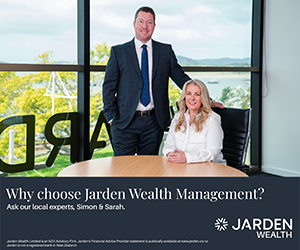With the economy having recovered strongly from the events of 2020, the Reserve Bank is paring back its monetary stimulus programme.
Interest rates are set to rise from record lows, and we’ve already seen mortgage rates and term deposit increase in recent weeks.
However, this will be a gradual process and interest rates are still likely to remain below historic averages for an extended period.
In the meantime, what options are there for New Zealanders relying on their investments for income?
1. You can adjust your lifestyle and spending habits to match the lower levels of income
Spending less is a valid option. Many of us spend more than we need to and would do fine being a little less frivolous. Last year’s lockdowns taught us that.
But where’s the fun in that? Especially when you’re working hard to be able to retire with a bit of capital behind you to enjoy a good standard of living when you’ve hung up your boots.
2. You can modify your investment strategy and seek out higher yielding assets
Another option is to give up on low-yielding conservative assets and shift those funds into shares or property, which offer higher returns.
The New Zealand sharemarket is offering an annual gross dividend yield of 3.6 per cent, on average, with some sectors and companies much higher than that. Similarly, according to the Real Estate Institute the rental yield on a Bay of Plenty property is 3.3 per cent, while some other regions are higher still.
In addition, both shares and property have historically provided attractive capital growth on top of those income returns.
There’s a catch though. Dividends and rents are far from guaranteed, and in the short-term capital growth can be non-existent or even negative. The last thing you want is to be in the position of needing to cash up your share portfolio or sell your property during a rough patch.
Moving into riskier assets can be an acceptable and logical course of action, if you have a reasonable time horizon and you don’t overdo it.
3. You can stay the course but eat into your capital to make up the shortfall
The third option is to spend the income your portfolio is generating and when you need more, spend a little of your capital from time to time.
Many Kiwi investors are averse to this approach, and are determined to leave every last cent to the next generation.
However, the total return (the combination of the capital gains and the income) of an investment portfolio should be considered a pool of income available to be drawn on as required, not just the interest or dividend payments.
One of the best things about shares is their liquidity, giving you the option to sell small parts of your holdings easily and cheaply. You can’t do that with many other asset classes, and investors can use this to their advantage when managing cash flow and income requirements.
A key advantage of this approach is that there is no need to dramatically adjust your investment philosophy or risk profile, for the sake of boosting yield.
Viewing returns as returns – regardless of where they come from – means you can maintain a well balanced portfolio of assets that matches your tolerance for risk and continue enjoying the good things in life.
For quality investment strategies contact your local Craigs Investment Partners branch.
Tauranga branch – 07 577 6049
tauranga@craigsip.com
Rotorua branch – 07 348 1860
rotorua@craigsip.com


















